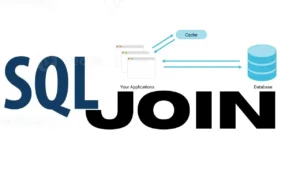Java Web Development: Java is a versatile programming language widely used in web development. It has established itself as a cornerstone of web development. It is robust, wide-ranging applications, and extensive community support make it an ideal choice for building dynamic and scalable web applications. From crafting server-side logic to handling data interactions, Java plays a pivotal role in creating interactive and user-friendly web experiences.
Java Web Development: Setting up the development environment (IDE, JDK)

- Install an Integrated Development Environment (IDE): Choose a user-friendly IDE like Eclipse, IntelliJ IDEA, or Visual Studio Code.
- Install Java Development Kit (JDK): Download and install the latest JDK from the official Oracle or OpenJDK website.
Basics of Java syntax and data types
- Syntax: Learn the basic structure of Java programs, including classes, methods, and statements.
- Data Types: Understand fundamental data types like int, float, double, and String.
Read also: Best 50 Java Multiple-Choice Questions to Test Your Skills, and Boost Your Knowledge
Understanding object-oriented programming (classes, objects, inheritance):
- Classes and Objects: Comprehend the concepts of classes (blueprints) and objects (instances of classes).
- Inheritance: Learn how classes can inherit properties and behaviors from other classes.
Explaining variables, operators, and control flow statements:
- Variables: Understand how to declare and use variables.
- Operators: Learn about arithmetic, comparison, and logical operators.
- Control Flow: Grasp concepts like if statements, loops (for, while), and switch statements.
Read also: The Best 50 MCQ on C Language with Answers
Introduction to web development concepts (HTML, CSS, JavaScript):

- HTML: Learn the basics of structuring web content.
- CSS: Understand how to style HTML elements.
- JavaScript: Explore the language for interactive web development.
Integrating Java with web technologies (Java Servlets, JSP):
- Java Servlets: Learn how to handle requests and responses on the server side.
- JavaServer Pages (JSP): Understand how to create dynamic web pages using Java.
Overview of popular Java web frameworks (Spring, Hibernate):
- Spring Framework: Explore a comprehensive framework for building Java applications.
- Hibernate: Learn an object-relational mapping framework for database interaction.
Best practices for Java web development
- Code Organization: Keep your code modular and organized.
- Naming Conventions: Follow standard naming conventions for readability.
- Documentation: Document your code to make it more understandable.
Resources for further learning (books, online tutorials, forums):
- Books: “Head First Java,” “Java: The Complete Reference.”
- Online Tutorials: Oracle’s Java Tutorials, Codecademy, and W3Schools.
- Forums: Stack Overflow for problem-solving and the Java subreddit for community support.
Additional Topics: Java Web Development
Common challenges faced by beginners learning Java for web development
- Overcoming Complexity: Break down complex concepts into smaller, manageable parts.
- Practice Regularly: Coding regularly helps reinforce learning.
Tips for effective debugging and troubleshooting in Java:
- Use Debugging Tools: Leverage the debugging features provided by your IDE.
- Check Logs: Examine error logs for clues when something goes wrong.
Introduction to database connectivity in Java web applications:
- JDBC (Java Database Connectivity): Understand how Java interacts with databases.
Overview of Java web application deployment process:
- JAR/WAR Files: Learn to package your applications for deployment.
Importance of testing and quality assurance in Java web development
- Unit Testing: Write tests to ensure individual components work as expected.
- Integration Testing: Test the collaboration of different components.
Explaining the concept of APIs and how to consume them in Java
- APIs: Understand what APIs are and how they facilitate communication between different software components.
Security considerations in Java web development:
- Input Validation: Always validate user input to prevent security vulnerabilities.
- SSL/TLS: Implement secure communication over the web.
Performance optimization techniques for Java web applications:
- Code Profiling: Identify and optimize performance bottlenecks in your code.
Introduction to front-end frameworks compatible with Java backends (React, Angular):
- React and Angular: Understand how these frameworks can complement Java backends.
Here are some key tips for achieving success in Java web development in 2024:
Master the Fundamentals:
- Solid Java Foundation: A deep understanding of core Java concepts like object-oriented programming, data structures, algorithms, and concurrency is essential.
- Server-side Technologies: Mastering technologies like Spring Boot, JSF, and Servlet APIs is crucial for building robust and scalable web applications.
- Databases: Knowledge of relational databases like MySQL and PostgreSQL is important for data storage and retrieval.
- Web Technologies: Familiarity with HTML, CSS, and JavaScript is necessary for building the user interface and front-end functionality.
Stay Updated with the Latest Trends:
- Microservices Architecture: This architectural style promotes modularity, scalability, and resilience, and is becoming increasingly popular.
- Cloud Computing: Leveraging cloud platforms like AWS, Azure, and GCP offers scalability, flexibility, and cost-efficiency.
- Reactive Programming: Utilizing frameworks like RxJava and Spring WebFlux enables developers to build responsive and elastic applications.
- DevOps Practices: Implementing continuous integration and continuous delivery (CI/CD) pipelines accelerates development cycles and ensures faster deployments.
Prioritize Responsive Design:
- Focus on Mobile-First Development: In today’s mobile-first world, designing and developing applications for mobile devices is crucial.
- Utilize Responsive Frameworks: Frameworks like Bootstrap and Materialize CSS simplify responsive design and ensure your application adapts to different screen sizes.
- Prioritize Accessibility: Ensure your applications are accessible to users with disabilities by adhering to WCAG guidelines.
Optimize for Performance:
- Measure and Analyze Performance: Use profiling tools to identify performance bottlenecks and optimize your code accordingly.
- Optimize Database Queries: Efficiently written database queries can significantly improve application performance.
- Utilize Caching: Implement caching mechanisms to reduce database load and improve response times.
Focus on Security Measures:
- Implement Secure Authentication: Utilize strong password hashing, multi-factor authentication, and other security measures to protect user data.
- Validate User Inputs: Sanitize user input to prevent SQL injection and cross-site scripting (XSS) vulnerabilities.
- Stay Updated on Security Threats: Regularly review security advisories and update your libraries and frameworks to address vulnerabilities.
Embrace Best Practices:
- Write Clean and Maintainable Code: Use proper naming conventions, indentation, and code comments to make your code easier to understand and maintain.
- Test Your Code Regularly: Implement unit and integration tests to ensure the functionality and quality of your code.
- Version Control Your Code: Utilize version control systems like Git to track changes, collaborate with others, and revert to previous versions if necessary.
Additional Resources:
- Stay Updated: Subscribe to tech blogs, follow industry leaders, and attend conferences to stay updated on the latest trends and best practices.
- Join Communities: Connect with other Java developers through online forums and communities like Stack Overflow and Reddit to share knowledge and collaborate on projects.
- Use Online Learning Platforms: Take online courses and tutorials to learn new skills and improve your knowledge.
Conclusion of Java Web Development
Java web development offers a rewarding career path for job seekers. It creates dynamic and interactive web Applications. You need to learn and master the fundamental concepts of Java. You need to understand fully the syntax, data types, and object-oriented programming concepts. Familiarize yourself with web technologies like HTML, CSS, and JavaScript to bring your web applications to life. Utilize Java Servlets and JSP to handle HTTP requests and generate dynamic content. Explore popular Java web frameworks like Spring and Hibernate to simplify complex development tasks. Adopt best practices, utilize resources effectively, and embrace challenges to become a proficient Java web developer.
Remember, practice is key, and don’t hesitate to explore real-world projects. Happy coding on your Java web development journey!



